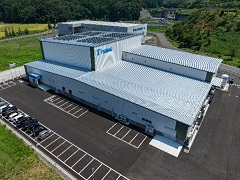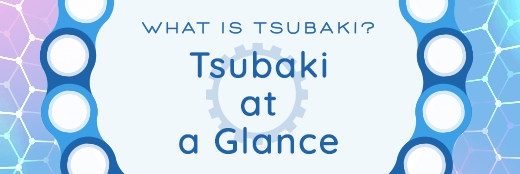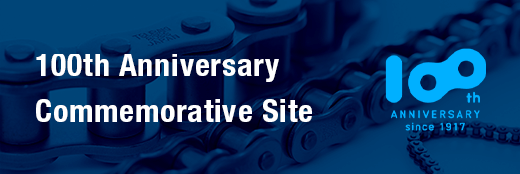Timeline

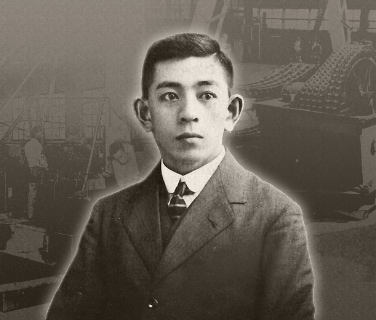
Don’t be a follower.
Blaze your own trail.
Setsuzo Tsubakimoto, Founder
Tsubakimoto Chain was founded in Osaka in 1917. Since that time, the company has been dedicated to creating products that contribute to people’s lives and social development, from individual parts to materials handling systems.
Our history of more than 100 years is the result of Setsuzo Tsubakimoto’s frontier spirit of “Value-discerning open-mindedness and cooperation” and “Blazing your own trail,” and the company’s sincere efforts to respond to the changing needs of the times, to provide technological innovations and solutions as a manufacturing company.
As we embark on the next 100 years, we will continue to transform and challenge ourselves as a manufacturing company that is essential for society by furthering the evolution of the “art of moving.”
100 Years of Progress
- 1917 Onwards Establishing a Foundation as a Machine Manufacturer
- 1949 Onwards From Post-War Reconstruction to an Era of High Growth
- 1970 Onwards Expansion to Global Markets
- 1986 Onwards Strengthening Our Global Production System
- 1999 Onwards Strengthening Our Management Foundation
- 2010 Onwards Striving to Become a Global Leader
- 2020 Onwards Contributing to the Resolution of
Social Issues by Challenging
New Business Areas
- 1917
- Established by Setsuzo Tsubakimoto in Kita-ku, Osaka as a private enterprise known as Tsubakimoto Shoten manufacturing bicycle chains
- 1923
- Began manufacture of machine chains using foreign-made catalogues as inspiration
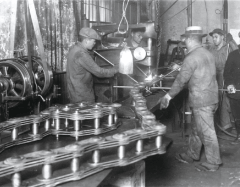
- 1928
- Ceased bicycle chain production to concentrate on industrial chains
- 1931
- Began sales via agents throughout Asia
Became a designated naval factory (registered as a naval purchasing supplier) - 1937
- Tsubaki products first used in a large-scale conveyor plant
(Entrance into the materials handling business)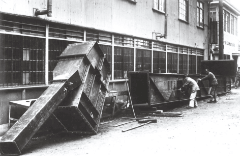
- 1938
- Completed the Tsurumi Plant in Osaka City and relocated operations
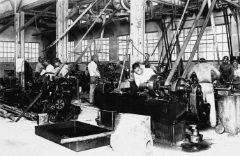
- 1949
- Marine roller chains approved by the Lloyd’s Register
Tsubakimoto listed on the Tokyo and Osaka stock exchanges - 1950
- Exported roller chain to the USA for the first time
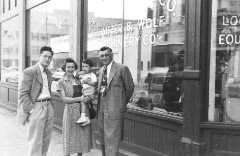
- 1953
- Became the first roller chain manufacturer in Japan approved by JIS (Japan Industrial Standards)
- 1957
- Began production of automobile timing chains
(Entered the automotive parts business)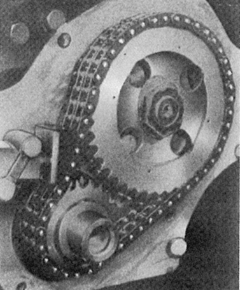
- 1958
- Developed a large chain reducer
(Entered the precision machinery business)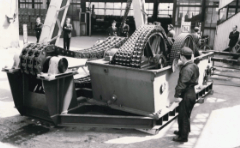
- 1962
- Completed the Saitama Plant in Hanno, Saitama
Expanded manufacturing of conveyors for automobile, steel, and consumer electronics industries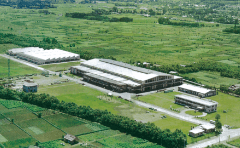
- 1965
- Tsubakimoto Morse Co. (later Tsubaki Emerson Co.) established through joint venture with BorgWarner (USA)
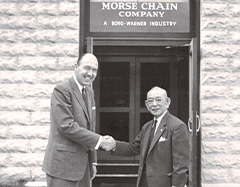
- 1966
- Completed construction of an automotive parts plant within the Saitama Plant
- 1970
- Established a joint venture company in Taiwan (first overseas manufacturing base)
- 1971
- Completed the Kyoto Plant (currently Nagaokakyo Plant) in Nagaokakyo, Kyoto (for manufacturing power transmission units & components)
Established Tsubakimoto USA, Inc. (later U.S. Tsubaki Holdings, Inc.) for entry into the North American market
- 1972
- Established Tsubakimoto Europe B.V. in the Netherlands. Later established sales companies in Canada and the Asian regions
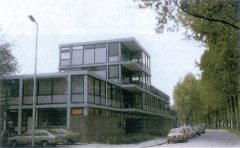
- 1977
- Completed a new development center (later an R&D center) within the Kyoto Plant
- 1981
- Spun off the bulk conveyor division to establish Tsubakimoto Bulk Systems Corp.
- 1982
- Completed the Hyogo Plant in Kasai, Hyogo (for manufacturing materials handling products)
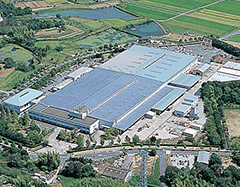
- 1983
- Established the first Materials Handling Systems Operations overseas base in the USA
- 1986
- Union Chain and Acme Chain (in 1988) acquired by UST (U.S. Tsubaki Holdings, Inc.), marking the beginning of local machinery chain production in North America
- 1987
- Introduced CI
Established a new symbol mark and target company image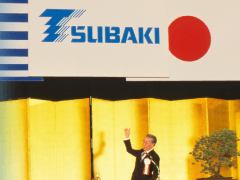
- 1989
- UST began local production of timing chains and delivery to General Motors
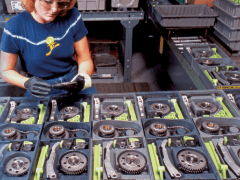
- 1990
- Set up the Golden Bell Pavilion at the International Garden and Greenery Exposition
- 1992
- Head office roller chain plant acquired ISO 9000 Series certification (with domestic and overseas Group manufacturing companies acquiring ISO 9000 Series certification by 1996)
Completed construction of the Tsubakimoto Emerson Co. Okayama Plant (currently the Tsubakimoto Chain Okayama Plant) in Tsuyama, Okayama - 1997
- Established a joint venture for manufacturing machinery chains in China (withdrawn in 2001)
- 1998
- Opened Tsubaki Techno School to train and pass on technical skills to young engineers
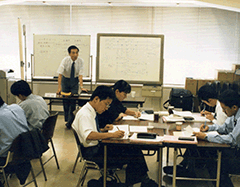
- 1999
- Released the Tsubaki Mission Statement
Announced business restructuring plans (which included consolidation of materials handling manufacturing bases, spin-off of Power Transmission Units and Components Operations companies, and integration of domestic sales companies)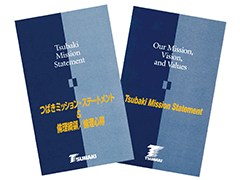
- 2000
- Established the Tsubaki Group Basic Environmental Policy
- 2001
- Completed Kyotanabe Plant in Kyotanabe, Kyoto. Completely relocated the main plant (chain plant)
Saitama Plant acquired ISO 14000 certification (with domestic Group companies acquiring certification by 2004)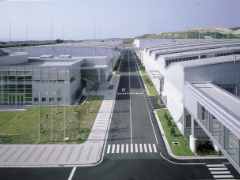
- 2002
- Established Tsubaki Emerson Co. as a joint venture between the Power Transmission Units and Components Business Unit and Tsubakimoto Emerson Co. (becoming a wholly owned subsidiary in 2013 and merging into Tsubakimoto Chain in 2017)
Established a subsidiary in Thailand for manufacturing automotive parts. Later established manufacturing subsidiaries in Shanghai, China (2004), South Korea (2009), and Mexico (2012)
Established the Corporate Work Ethics - 2003
- Established the Tsubaki Group Basic Risk Management Strategy
- 2004
- Introduced the corporate executive officer system to ensure speedy execution of operations
- 2006
- Celebrated the 90th anniversary of our founding by unifying domestic and overseas logos and establishing a brand message
Acquired Yamakyu Chain Co., which manufactures and sells plastic chains, as a consolidated subsidiary
- 2010
- Acquired Kabelschlepp, which manufactures and sells cable carriers, as a consolidated subsidiary in Germany
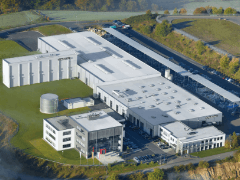
- 2012
- Established a chain manufacturing company in Tianjin, China
Acquired Mayfran Holdings, which manufactures and sells chip conveyors, as a consolidated subsidiary
Held the First Tsubaki Technical Skills Olympics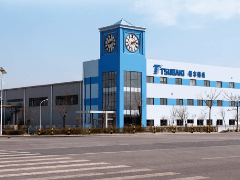
- 2014
- Established the Long-term Vision 2020 with FY 2020 as the target
Entered the agribusiness and took on new business challenges such as monitoring and V2X bi-directional EV charging systems - 2016
- Established a subsidiary in the Czech Republic for manufacturing automotive parts (marking the 12th Automotive Parts Operations factory in eight countries)
- 2017
- Strengthened Tsubaki Group by establishing a new corporate philosophy, the Tsubaki Spirit, to mark the company’s centennial
Merged Tsubaki E&M Co. to establish the Motion Control Division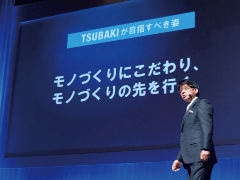
- 2018
- Acquired Central Conveyor of the U.S., which manufactures and sells materials handling systems, as a consolidated subsidiary
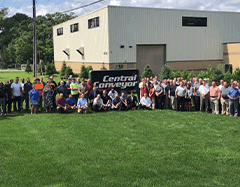
- 2020
- Renamed “Automotive Parts Operations” to “Mobility Operations” following an expanded business scope
Established the Basic Policy on Sustainability and strengthened relevant activities
Introduced an Age 65 Retirement System to promote the success of senior employees - 2021
- Established the Long-Term Vision 2030, and began promoting accelerated development of new products and businesses with the goal of contributing to the resolution of social issues
- 2022
- Introduced “T-Startup,” a new business proposal system for employees in Japan and overseas
Acquired a manufacturer and supplier of flexible couplings in North America as a wholly owned subsidiary - 2023
- Established the New Business Development Center and DX/IT Center
- 2024
- Acquired EUROCATENA GmbH(now Tsubaki Jungbluth GmbH), a German manufacturer and seller of conveyor chains, as a consolidated subsidiary
- 2025
- Completed the Fukui Mihama Plant in Mihama, Fukui. (a next-generation model vegetable factory)
